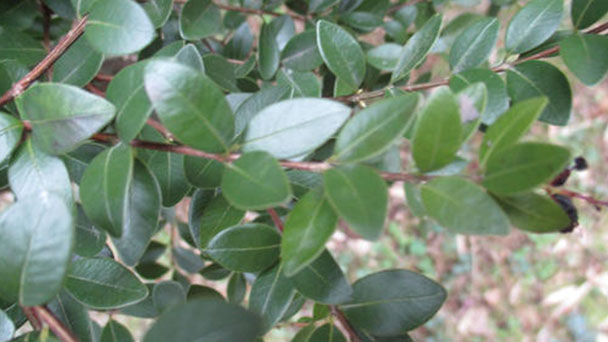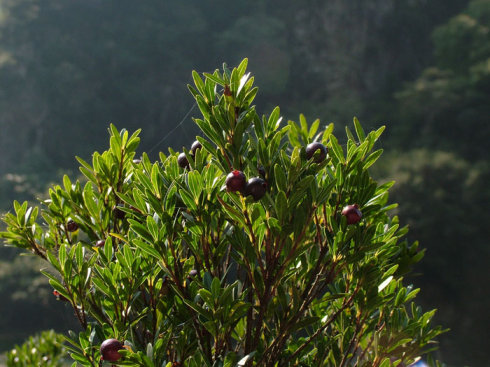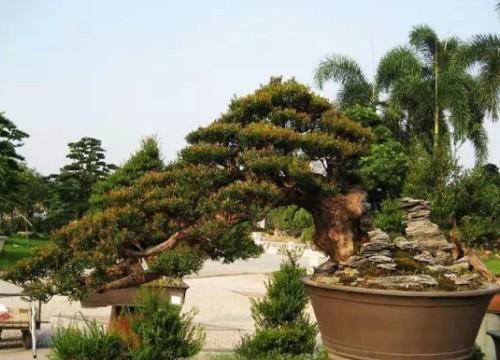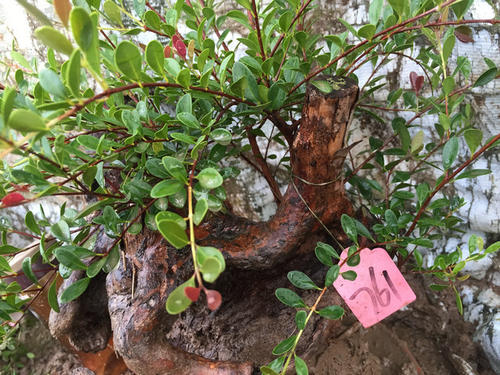How to propagate Boxleaf Eugenia
Written by Maggie
Feb 07 2021

Boxleaf Eugenia plants are mainly grown in low mountain open forests or thickets. Planters have learned that this plant is more suitable for the growth and development of Boxleaf Eugenia plants because it is planted in deep soil layers rich in humus. As the seedlings of Boxleaf Eugenia plants should be weeded out in time after being unearthed, it can effectively promote the growth of Boxleaf Eugenia plants.

How to propagate Boxleaf Eugenia
Boxleaf Eugenia is mainly distributed in Zhejiang, Jiangxi, Fujian, Guangdong, Guangxi Zhuang Autonomous Region, Hunan and other provinces, suitable for acidic, neutral or slightly alkaline soil, growth is slow, slightly cold resistant, suitable for cultivation in the south of China Qinling provinces, boxleaf eugenia propagation mainly with sowing propagation.
1. Seed collection and treatment
Choose strong growth, no pests and diseases of the strong - aged tree seed collection. Seed is usually collected in December when the peel is purplish black, and seeds with larger grains are collected as much as possible. The fruit of boxleaf Eugenia is berry. After the seed collection, impurities were removed, the pulp was compost for 7~8d, and the pulp was decomposed. During this period, it needs to be frequently turned, so as to avoid the influence of high fermentation temperature on the seeds. When the pulp is completely rotten, the pulp shall be removed by mashing or rubbing with round wooden sticks, and then washed and dried with water to obtain pure seeds. After washing and drying, the pulp shall be put in a cloth bag by about 5kg/ bag, and stored in the ventilated layer with wet sand. The seed water content was 8%~10%, the mass of 1000 seeds was 72.5g, and the germination rate was 86%.
2. Disinfect and soak seeds
2~3 days before sowing, seeds were screened to select seeds that were well-developed, full, large in size, high in germination rate, strong in vitality and free from diseases and insect pests. Then, the Boxleaf Eugenia seeds were soaked in 3% potassium permanganate solution for 30min and then taken out. Then, the seeds were soaked in warm water at 65℃ for 24h. The impurities of the seeds floating on the water were removed.
3. Soil preparation
(1) Make a bed
The steel frame single shed (30m in length and 6m in width) was selected as the seedbed, with a bed width of 100cm and a footpath width of 40cm. The bed was surrounded by wooden boards and the bed height was 10cm.Beds can also be made in the open air.
(2) Soil disinfection and treatment
After leveling at the bottom of the seedbed, the soil was disinfected with 0.2% dixan sodium powder and sprinkled with 3% Carbofuran granules, 2.5kg per 667m2, to control underground pests.
(3) Matrix configuration
The seedbed substrate is mixed with peat: yellow-heart soil: fine sand = 5:4:1 ratio, and the yellow-heart soil shall be sifted. Then evenly spread into the seedbed, substrate tile thickness of 7~8cm.
(4) Substrate disinfection
After the substrate was laid flat, it was immediately watered, and then the substrate was disinfected with 45% dixan sodium powder and 0.2% liquid. The seedbed was covered with plastic film for 24h before sowing.

4. Seeds
(1) Sowing time
The sowing time of Boxleaf Eugenia can be from March to April, and the middle to late March is appropriate.
(2) Sowing method
The substrate of the seedbed was moderately compacted before sowing, and was watered and permeable the day before sowing. After sowing, the substrate was covered with mixed substrate with a thickness of 0.3-0.5cm. No seeds were found, and the substrate was gently pressed with a wooden board. Then pour water once, and spray 25% carbendazine wettable powder 0.125% liquid with atomizer on bed surface. The sowing rate was controlled at 0.167kg/m2. After sowing seedbed to build a small arch shed, there are three strands of agricultural film airtight.
Seedling stage management of Boxleaf Eugenia
1.The shade
About 40d after sowing, the upper part of the scaffolding is covered with 65% sunshade, which can be uncovered in rainy days and removed after September except for high temperatures in summer.
2. Remove the small arch shed
When the seedling emergence rate reached more than 95%, the small arch shed was removed on cloudy days.
3. Water management
Spray water in time after fixing seedlings, substrate humidity is controlled at 65%~70%, spray water is controlled after late August to facilitate the lignification of seedlings.
4. Weeding
Miscellaneous was found after emergence. Grass timely manual removal, weeding to master the "in addition to early, in addition to small, in addition" principle.

5. Fertilization
When the seedlings grew 2~3 true leaves, 0.1%~0.3% urea liquid was sprayed every 10~15d, nitrogen fertilizer was stopped in early September, and 0.2% compound fertilizer was sprayed every 10~15d.
6. Anti-freezing in winter
Boxleaf Eugenia seedling environment temperature -- 10℃ below to take antifreeze protection, the main antifreeze measures is to stop nitrogen fertilizer in September, starting in early October, every 15 days spraying 1 dihydrogen phosphate and borax mix
Liquid was sprayed for 3 times to increase the degree of lignification of seedlings. In the open seedbed to cover the small arch shed; The nursery bed in the single shed can be covered with antifreeze film outside the shed. The average seedling height and root diameter of Boxleaf Eugenia1 were up to 15~20cm, 0.15~0.18cm, and the seedling yield was 800~1000 plants /m2.
Latest Updated
- Benefits of Bugleweed - 7 Science-backed Health Benefits
- Bugleweed Dangers & Side Effects - Is It Poisonous?
- How to Plant Evergreen Trees - What You Should Know
- When to Plant Evergreens - Grow Guide for Evergreen Trees
- 12 Wonderful Evergreen Shrubs for Your Garden
- 12 Popular Evergreen Plants with Pictures for Beginners
- When And How To Prune A Lilac Bush Like a Pro
- How to Grow & Care for Lilac Vine (Hardenbergia Violacea)
- Japanese Lilac Tree (Syringa Reticulata) Care & Propagation Guide
- Shumard Oak Pros and Cons - What to Know
Popular Articles
- Winter maintenance of Antirrhinum Majus
- How to Grow Terminalia Mantaly Tree
- How to Grow and Care for Crossostephium Chinense
- How to grow Antirrhinum Majus in spring
- Peristeria Elata (Dove Orchid) Profile: Info & Care Guide
- Underwatered Snake Plant (Sansevieria Trifasciata) - Signs And How To Fix
- How to Care for Brazilian Jasmine Plant (Mandevilla Sanderi)
- How to Grow & Care for Graptopetalum Purple Delight in Summer
- Rosa Chinensis (China Rose): Plant Growing & Care Tips
- How to Care for Baby Sun Rose (Aptenia Cordifolia)